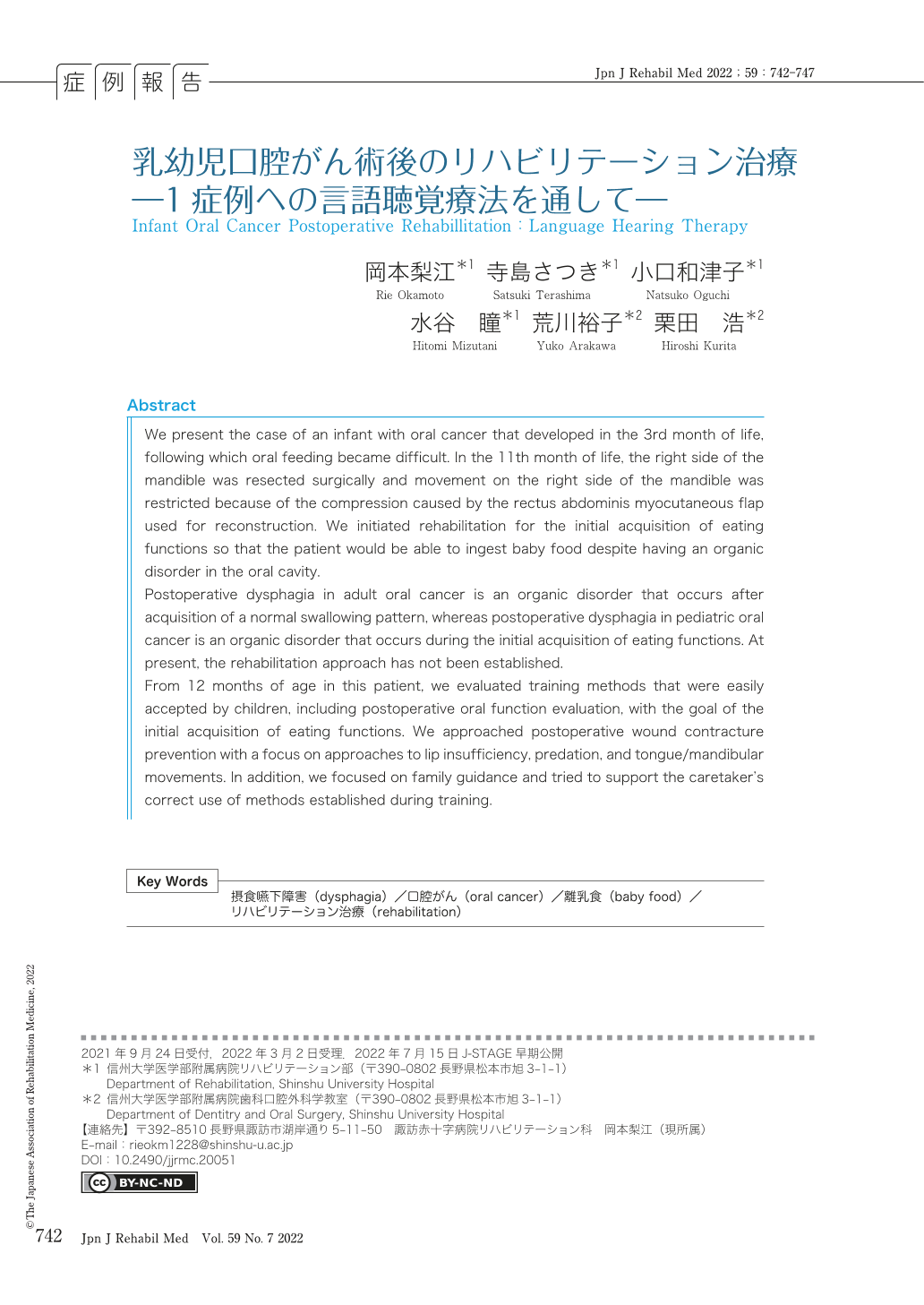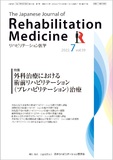Japanese
English
- 販売していません
- Abstract 文献概要
- 1ページ目 Look Inside
- 参考文献 Reference
はじめに
今回,乳幼児期に発症した口腔がんによる口腔機能障害に対するリハビリテーション治療と並行して乳幼児の摂食嚥下機能発達に治療を要した症例を経験したため報告する.乳幼児における摂食嚥下機能は,段階を踏んで健常児の成長発達をもとに8つに分類される1).嚥下機能獲得期・捕食機能獲得期には下唇の内転や舌の蠕動様運動,顎・口唇の随意的閉鎖,上唇での取り込み機能が獲得される.
成人の口腔がん術後の口腔機能障害に対するリハビリテーション治療は,このような正しい嚥下パターン獲得後2)の器質的障害であり,その発症頻度も高いことから,種々の訓練方法が報告され,実践されている.一方,通常の乳幼児の摂食嚥下機能発達を促すさまざまな方法が報告されている1).しかし,乳幼児の口腔機能獲得期に器質的障害をきたした症例に対する確立された訓練方法はなく,器質的障害・機能発達面両者に対応するための児へのアプローチ方法も確立されていないのが現状である.
本児は,乳幼児期口腔がん発症により,術後の影響で口唇,舌,下顎に運動制限をきたし,口腔機能障害に対するリハビリテーション治療が必要であった.また,乳幼児期のため,摂食嚥下機能発達に対する治療を同時に行う必要性が生じた.本児の両親に対し本報告の主旨や内容についての説明を行い情報公開についての承諾を得た.
Abstract
We present the case of an infant with oral cancer that developed in the 3rd month of life, following which oral feeding became difficult. In the 11th month of life, the right side of the mandible was resected surgically and movement on the right side of the mandible was restricted because of the compression caused by the rectus abdominis myocutaneous flap used for reconstruction. We initiated rehabilitation for the initial acquisition of eating functions so that the patient would be able to ingest baby food despite having an organic disorder in the oral cavity.
Postoperative dysphagia in adult oral cancer is an organic disorder that occurs after acquisition of a normal swallowing pattern, whereas postoperative dysphagia in pediatric oral cancer is an organic disorder that occurs during the initial acquisition of eating functions. At present, the rehabilitation approach has not been established.
From 12 months of age in this patient, we evaluated training methods that were easily accepted by children, including postoperative oral function evaluation, with the goal of the initial acquisition of eating functions. We approached postoperative wound contracture prevention with a focus on approaches to lip insufficiency, predation, and tongue/mandibular movements. In addition, we focused on family guidance and tried to support the caretaker's correct use of methods established during training.

Copyright © 2022, The Japanese Association of Rehabilitation Medicine. All rights reserved.


